Arts-related teaching and research at UTokyo What kinds of art activities are conducted at a non-arts-centered comprehensive university?

Arts-related teaching and research at UTokyo
What kinds of art activities are conducted at a non-arts-centered comprehensive university?
On this page, we showcase a selection of ongoing art-related research and educational activities at the University of Tokyo. Take a look at arts activities at a comprehensive university to see how they differ from those in an arts university.
Interfaculty Initiative in Information Studies (III) and Graduate School of Interdisciplinary Information Studies (GSII)
The 20th student media arts exhibition
We begin by introducing the annual University of Tokyo iii Exhibition staged by the University’s Interfaculty Initiative in Information Studies (III) and Graduate School of Interdisciplinary Information Studies (GSII). This public exhibition features media arts created by students majoring in information studies. The project has received high accolades, and in 2008, UTokyo became the first comprehensive university to be invited to participate in “Arts Electronica,” a global media art festival in Austria.
Originally planned by student volunteers when it began in 2001, the project is now conducted as a part of an official class for which credits are earned. According to Professor Takeshi Naemura, the project’s supervisor, students play leading roles not only in creating artworks but also in directing, producing, production managing, accounting, public relations, design, spatial design, venue setup, web services, record-keeping and management.
“Somewhere between 20 and 25 students enroll every year to take the class, but the exhibitions also attract the involvement of 10 to 15 alumni and graduate students from places like the Tokyo University of the Arts and Tama Art University. There’s something inherently interesting about connecting people who have skills but aren’t sure what to make with those who want to create something but lack the requisite skills.”
A distinguishing feature of the class is that a pre-exhibition takes place in July even though the real event does not take place until November. New students go through the entire process — from conceptualization of the work and production of a prototype to exhibition — over the course of three months from April. The students then head into the autumn exhibition after having had the opportunity to reflect on their work. The emphasis here is placed on experiencing the significance of connecting feedback to the next step. Even during the autumn exhibition, displaying the work and getting feedback from visitors are the conditions for receiving the credit. Indeed, when reporters explored the venue for the 20th iii Exhibition, which was set up in three locations in the Faculty of Engineering Building 2 on Hongo Campus, they were hailed one after another by the students, who explained passionately about their works. For many visitors, as well, the exhibition likely overturned their preconception that UTokyo students are intelligent but poor communicators.
“Technical people tend to talk about how they are implementing the technology, but we are teaching the students to speak about the kinds of experiences their work will evoke in the viewer. Also, while the sharing of information among members takes place for the most part online, an important rule is that major decisions have to be decided face-to-face during class time. This is because in-person communication is of the utmost importance for staging an exhibition that will bring people in from outside the campus.”
Through their experience of the emergent practices of expressing and communicating by intermingling artistic elements with information technology, more than a few students later embark on more serious engagements with artistic fields, some of them graduating to become active in every direction as teachers. There is no doubt that this valuable and unique experience is making a major educational impact on students.
From iii Exhibition 20 “Dest-logy REBUILD”
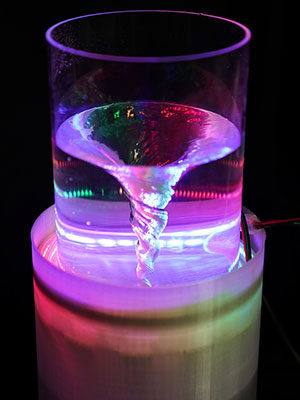
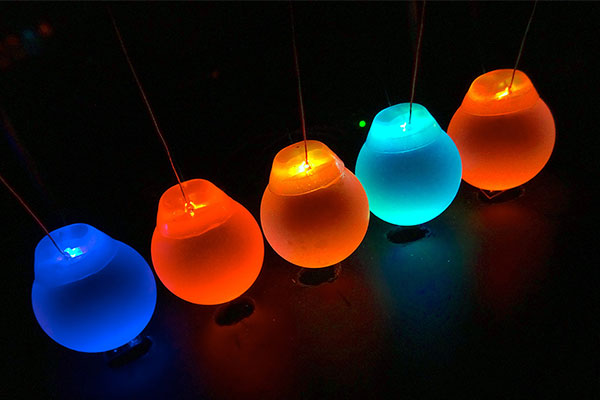
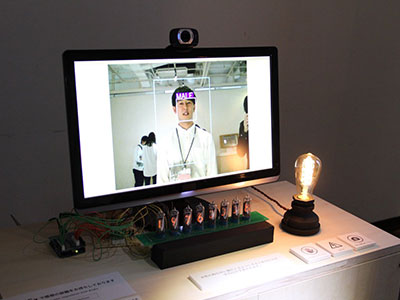
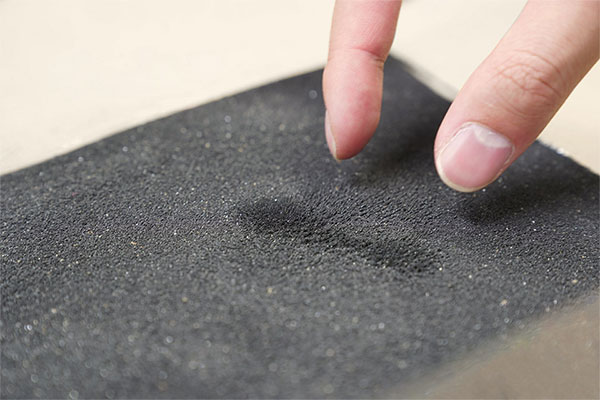
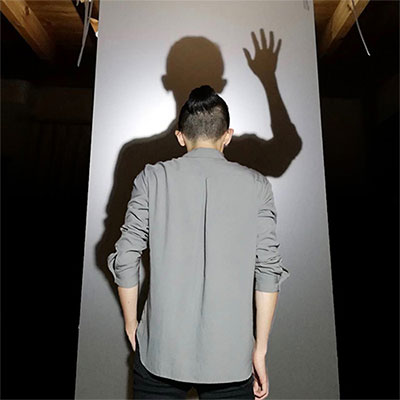
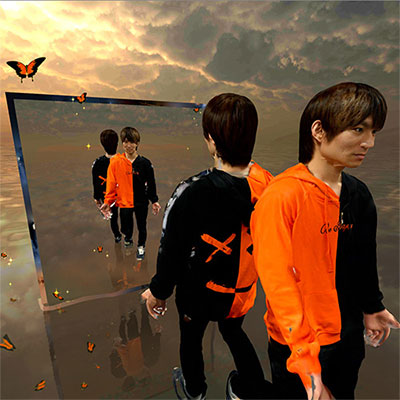
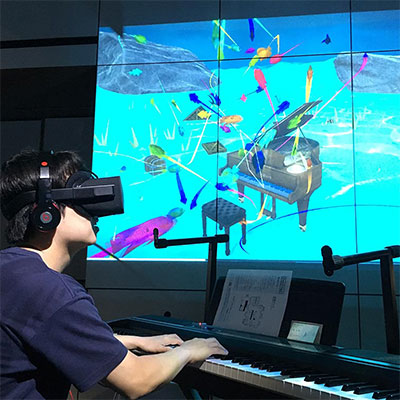
Institute of Industrial Science (IIS)
Working as an organization to promote the fusion of engineering and design
Established in 1949, the Institute of Industrial Science (IIS) is an affiliated research institute of UTokyo that encompasses almost every engineering discipline. From the micro world of the quantum level to the macro world of the global level, cutting-edge engineering research has been conducted at this laboratory for 70 years. Recently, the IIS has been actively working to create projects that integrate engineering with art and design.
In 2016, the IIS founded the RCA-IIS Tokyo Design Lab in collaboration with the United Kingdom’s Royal College of Art (RCA), launching research and teaching activities in design and engineering that would build a bridge between Japan and Britain. In 2017, Professor Miles Pennington, who has been a leading figure in the innovation, design and engineering sections at the RCA, and Project Associate Professor Marissa Ozaki, a contemporary artist known for her activities under the pseudonym “Sputniko!,” joined the lab. In addition, the Design-Led X Platform was established within the IIS as an organization to train personnel able to generate new value while also serving as a base for collaboration between industry and academia as well as the public and private sectors. The Design-Led X Pedagogical Research initiative was also launched as a new collaborative research organization for the entire university.
In December 2018, the IIS held its 70th anniversary exhibition, “POTENTIALITIES: Exhibition for A Possible Future – Engineering × Design,” at the National Art Center, Tokyo, in Roppongi. There, near the Institute’s former home, several elegant prototypes born out of research that combined engineering and design afforded visitors a glimpse of the potential futures that might lie ahead of us.
“Rather than having designers put the finishing touches on the products of research, our approach is to have designers and researchers work together from the research stage,” Professor Shunji Yamanaka, a faculty member of the Design-Led X Platform and director of the exhibition, said during a news conference held prior to the commemorative exhibition. Yamanaka, who has worked as an industrial designer for products such as JR East's SUICA ticket gates, the Nissan Infiniti Q45 and beautiful prosthetic legs, talked about his encounters with various research projects at the Institute at the time of his appointment in 2013, and how he had felt it to be a “horde of diamonds in the rough.” This exhibition gave beautiful shapes to 14 such “diamonds,” including the Imai architecture Lab, the Okabe rare metals Lab and the Takeuchi bio-hybrid Lab.
To a question about the difference between art and design asked by a reporter who suddenly grew curious while gazing over the artistic hand-drawn sketches Yamanaka had made for each exhibit, Yamanaka clearly stated that “the relationship between art and design is not far from the relationship between science and engineering.” It seems that good designers are also good educators at heart.
From “POTENTIALITIES: Exhibition for A Possible Future Engineering × Design”
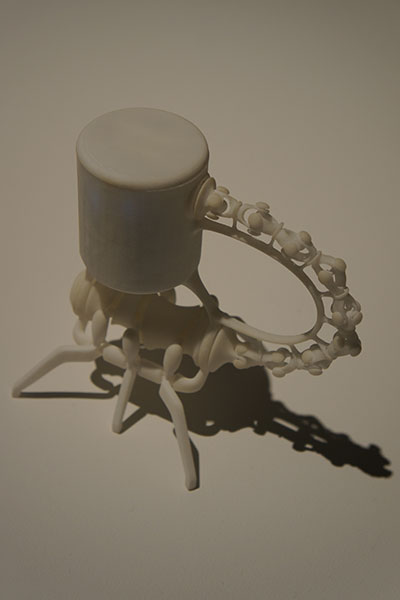
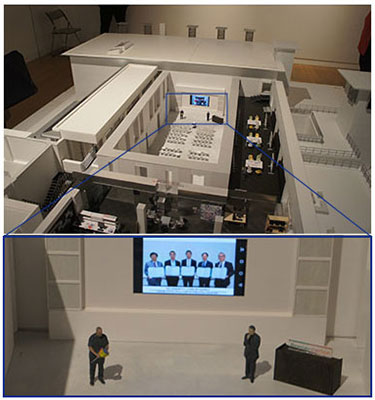
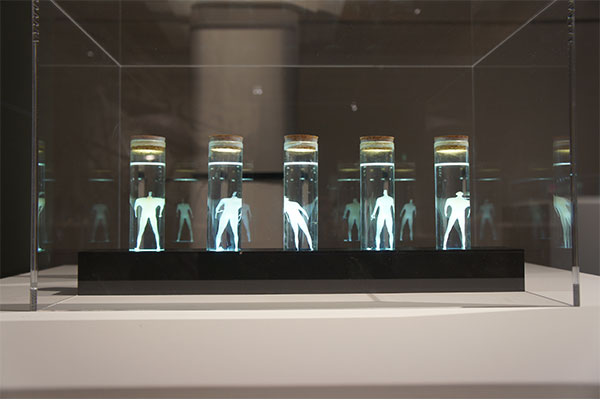
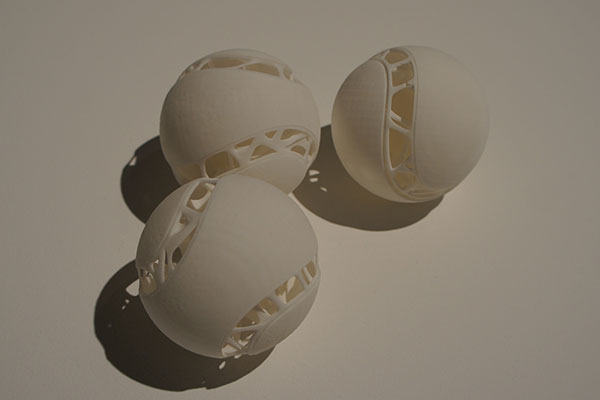
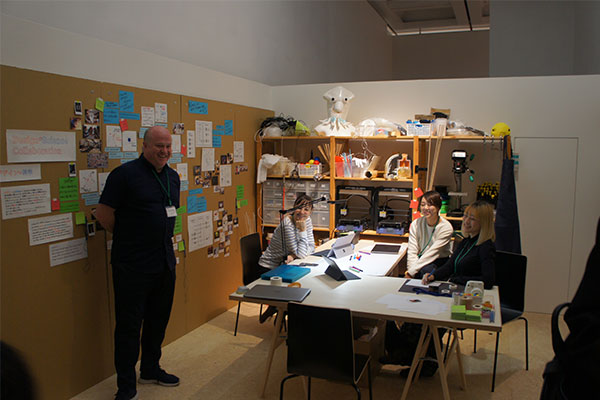
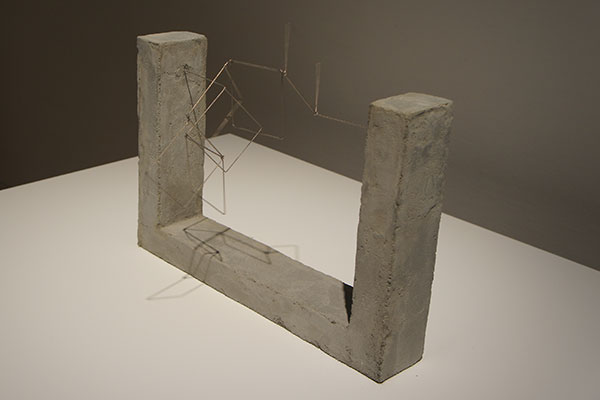
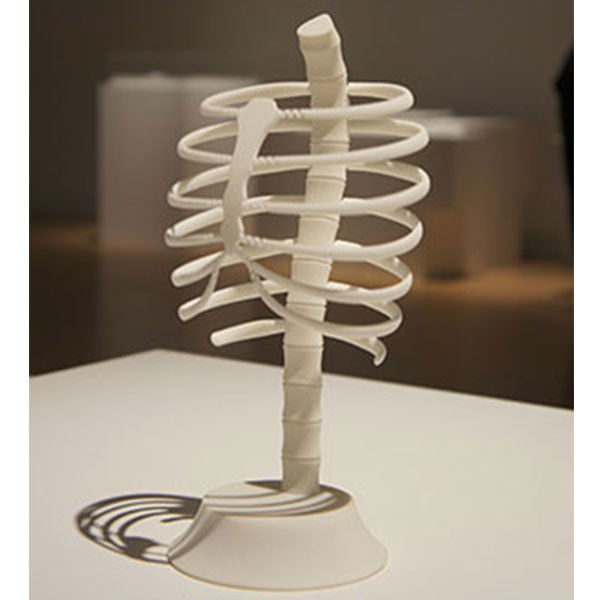
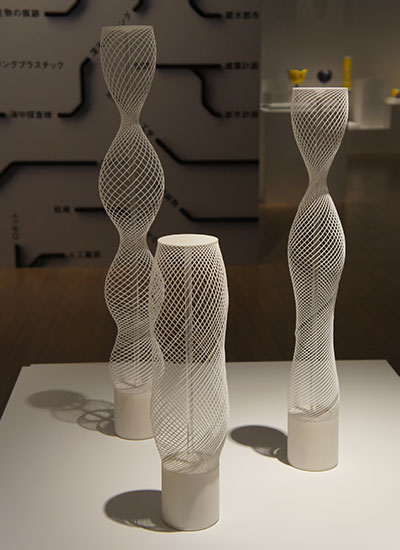
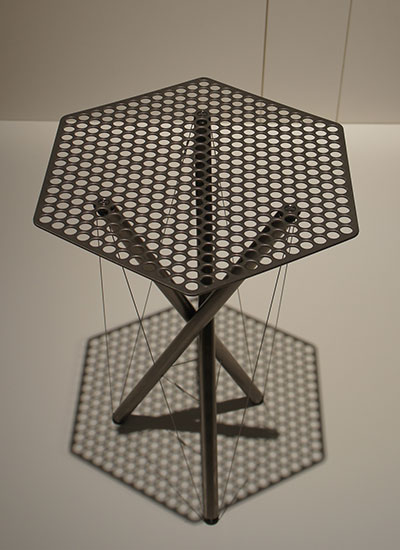
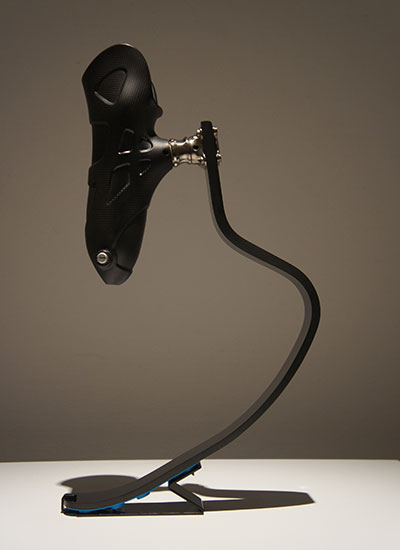
Kavli Institute for the Physics and Mathematics of the Universe
Artists produce works during their stay with the Artist-In-Residence (AIR) program
In March 2018, the Kavli Institute for the Physics and Mathematics of the Universe (Kavli IPMU) held an exhibition under the title, “an attempt on the ren- encounter between Science and Art, 2018 Tokyo - The 1st Kavli IPMU AIR Program Artist Exhibition.” The exhibition featured works produced by three artists during their month-long stay and interaction with researchers at the IPMU. In addition to displaying the new works of paintings, media and sculpture realized from the days that the artists had spent at the IPMU, the 17-day exhibition also served as a showcase for the research being conducted at the Institute.
While the artist-in-residence (AIR) model that achieved widespread popularity in Europe and America since the 1990s has recently been making inroads in Japan, it is still a rarity at research institutions. To make such a program work, it is essential for staff to be well versed in both art and science. Aya Tsuboi, who has been working at the IPMU since 2009, has also been involved in the world of contemporary art since her days as an undergraduate, and she continues to create her own work as a member of the Institute’s academic support staff.
“At first, I arranged for people in the Institute to contribute pictures relating to their research to stage a photo exhibition. I personally printed the images I collected and stuck them on the walls of the Piazza.”
Only about five researchers took part in the networking event held during the first exhibition. However, the interactions that had started with pictures gradually began to expand. Once the photo exhibition got off the ground, Tsuboi began thinking about ways to use the activity for public relations purposes. That was when she heard of the AIR program at the European Organization for Nuclear Research (CERN). “We had planned a visit to examine science and art programs at an American university with the funds we received from winning the second prize of a campus contest known as the President’s Award for Business Transformation. While the AIR format was not very popular on their campus, seeing the various programs in place during our visit, I felt that such a program would work well at the Kavli IPMU. An encounter with painter Yasuo Nomura, who attended the science and art talk we held later on, also gave us a great opportunity.”
In the summer of 2015, the first AIR was implemented by welcoming Nomura as an artist-in-residence. Researchers were invited to visit the artist’s room to see for themselves a site of artistic production that would not usually be seen. At workshops, attempts to express mathematical formulae as pictures stimulated researchers and the artist alike. During teatime, a fixture on the Institute’s daily schedule attended by all members of faculty and staff, enthusiastic exchanges took place using the IPMU’s hallmark blackboard. What kinds of artwork were born out of the four weeks of these discussions?
“Hearing from a mathematician about how to handle higher dimensions using a technique known as fibration had a huge impact on Nomura. While its influence can also be seen in Invisible Halo, the work he produced immediately after his residence, it has been more directly expressed and developed in his subsequent works.”
This chance encounter between science and art has yielded its fruits first in the works of the latter. How might its effect have been felt in the former? We will keep watching the IPMU as it continues to challenge the mysteries of the universe by bundling the three fields of physics, mathematics and astronomy.
From “an attempt on the ren- encounter between Science and Art, 2018 Tokyo”
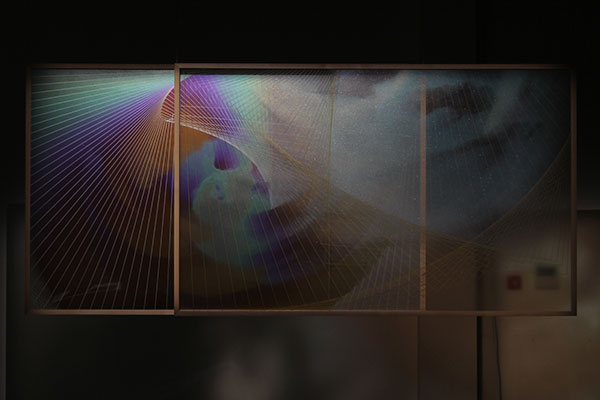
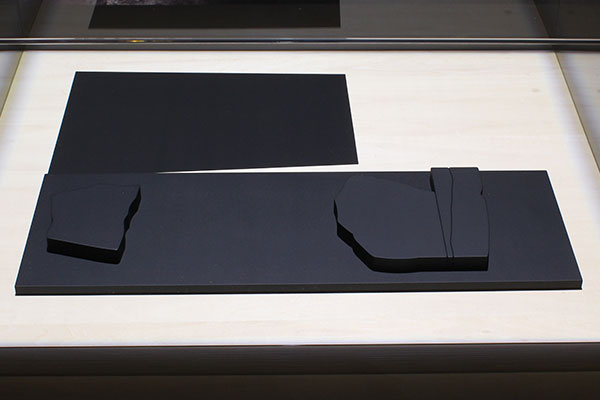
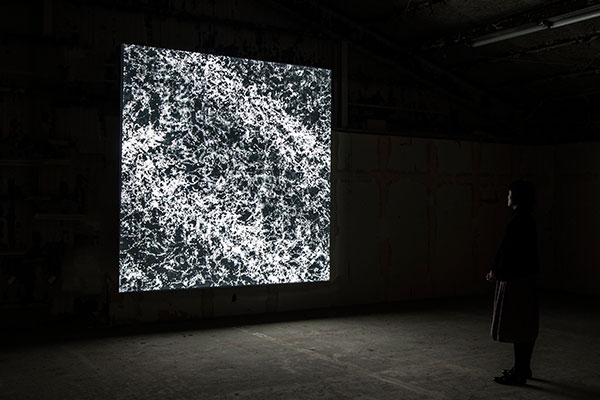
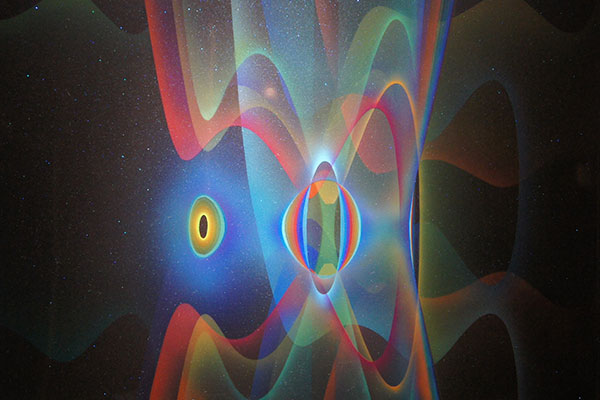
Intermediatheque
A museum that creates new value through academic heritage and art
Known for its strong commitment to design and art even within UTokyo, the Intermediatheque (IMT) was established in 2013 as a collaboration with Japan Post Co., Ltd. As a new academic and cultural branch of the University Museum, University of Tokyo (UMUT), it focuses on the academic heritage that the University has accumulated since its founding.
“We have endeavored to place the museum’s emphasis on design,” IMT’s director and Project Professor Yoshiaki Nishino says. As his words suggest, IMT eschews lengthy textual explanations to introduce its exhibits. Instead, every inch of the museum has been carefully devised with consideration to satisfy the curiosity of visitors visually rather than verbally. A distinctive feature is that faculty members are personally responsible for producing almost everything from the graphics and display fixtures to interior design and furnishings. The researchers at IMT are not only teachers but designers and artisans as well.
It is only natural for such a museum to hold a multitude of art-related exhibitions and research and teaching activities. Examples include “Taste of Curiosity – Museum of Curiosity” (2014–2015), an exhibition focused on the sense of taste in collaboration with artist Ayako Suwa; “The Face of Medicine” (2016–), which involved restoring and exhibiting the portraits and busts of medical scientists inherited by the University of Tokyo Hospital; “Perspectives” (2017), an experimental exhibition combining pre-war furnishings with contemporary art; “The Golden Age of Botanical Art” (2017), which brought together botanical specimens held by the University with botanical illustrations from the collections of the Royal Botanic Gardens, Kew in the United Kingdom; and “The Quarries of Imagination – Stones between Art and Artifact” (2018–2019), a joint project with artist Hugues Reip combining contemporary art with academic specimens on the theme of stone.
Representing a fresh departure from the offerings found in typical art museums and other university museums, the JP Tower in Tokyo’s Marunouchi district is home to an artistic vision unique to UTokyo.
A selection of art-related initiatives at the IMT
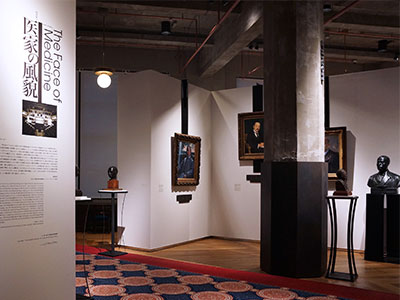
© Intermediatheque / Space and exhibition design
© UMUT works
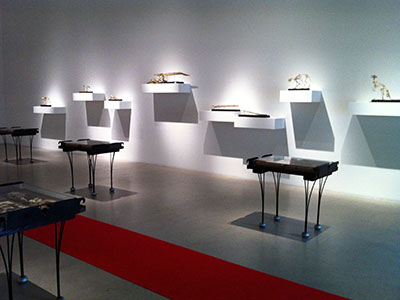
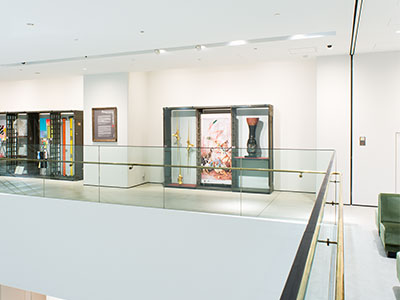
© Intermediatheque / Space and exhibition design
© UMUT works
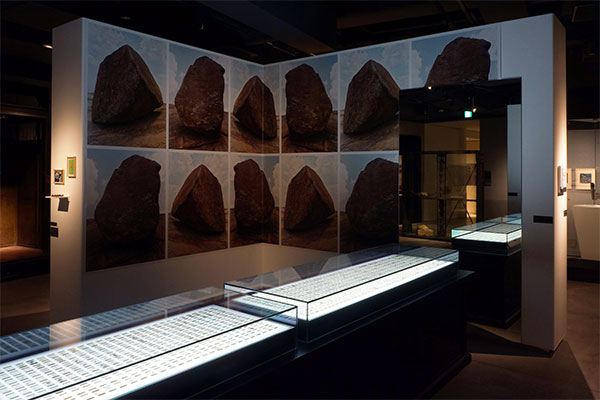
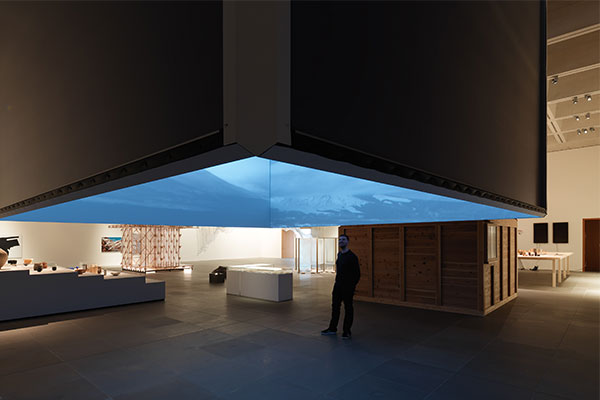
Graduate School of Arts and Sciences
The campus-wide promotion of research and education through artistic practice
Contemporary art has developed in diverse ways while incorporating humanistic knowledge from the liberal arts and cutting-edge knowledge from the sciences. Research in the arts, as well, goes beyond aesthetics and art history to also incorporate a wide variety of fields such as the study of cultural representation, cultural resource management, pedagogics, kinesthetics, neuroscience, artificial intelligence, cognitive science, mathematics and architecture, among others. Yet at UTokyo, with regard to the arts, opportunities for collaboration that go beyond the boundaries of literature and science used to be almost unknown.
Today, however, faculty members engaged in arts-related research in various departments are preparing themselves for collaborative activities centered on art creation. Several departments, including the Graduate School of Arts and Sciences, are joining efforts and working together with artists in an attempt to realize an interdisciplinary model of joint research related to art creation. In March 2018, the faculty members concerned, including those on the preparatory committee, convened a symposium entitled, “Gakumon to Geijutsu no Kyodo: Tokyo Daigaku kara no Shintenkai” [Collaborations Between Academia and the Arts: New Developments from the University of Tokyo]. The important thing is for the results of such research to be redirected back into student educational activities.
“We need to incorporate arts education not as an arts university that seeks to cultivate artists, but precisely because we are a comprehensive university that produces talented individuals in a variety of areas. While all the world’s top universities have arts faculties, the University of Tokyo has fallen behind in this respect,” says Professor Kenji Kajiya (Graduate School of Arts and Sciences) who moderated the symposium. Artistic sensibilities play a major role in human learning processes, and the arts are key to learning diverse sets of values. In an era where coming up with unconventional and different ways of thinking is being sought in every sphere, there is no doubt that arts education nurtures the power of such ideas. Artist-led classes have already started in the College of Arts and Sciences and the Faculty of Education. We invite you to join us in looking forward to the launch of new projects that will link the breadth and depth of a comprehensive university with arts research and education.
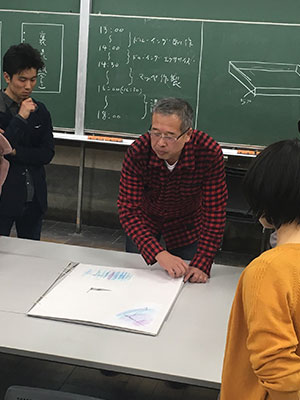
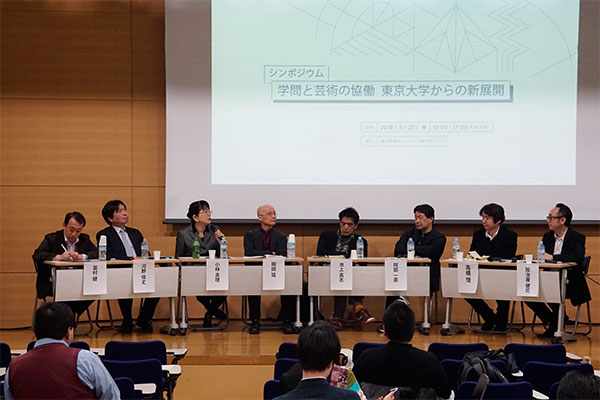
* This article was originally printed in Tansei 38 (Japanese language only). All information in this article is as of March 2019.







